Impact Fatigue of Viscoelastic Materials Subjected to Pounding
Abstract
:1. Introduction
2. Impact-Fatigue Test
3. Results and Discussion
3.1. Changes of Appearance
3.2. Fatigue Effect on Pounding Stiffness
3.3. Changes of Hysteresis Loops
3.4. Changes of the Dissipated Energy per Cycle
4. Conclusions
Acknowledgments
Author Contributions
Conflicts of Interest
References
- Frahm, H. Device for Damping Vibration of Bodies. U.S. Patent No. 989,958, 18 April 1911. [Google Scholar]
- Weber, F. Optimal semi-active vibration absorber for harmonic excitation based on controlled semi-active damper. Smart Mater. Struct. 2014, 23. [Google Scholar] [CrossRef]
- Weber, F.; Maślanka, M. Precise stiffness and damping emulation with MR dampers and its application to semi-active tuned mass dampers of wolgograd bridge. Smart Mater. Struct. 2014, 23. [Google Scholar] [CrossRef]
- Weber, F. Semi-active vibration absorber based on real-time controlled MR damper. Mech. Syst. Signal Process. 2014, 46, 272–288. [Google Scholar] [CrossRef]
- Mishra, S.K.; Gur, S.; Chakraborty, S. An improved tuned mass damper (SMA-TMD) assisted by a shape memory alloy spring. Smart Mater. Struct. 2013, 22. [Google Scholar] [CrossRef]
- Hatzigeorgiou, G.D.; Pnevmatikos, N.G. Maximum damping forces for structures with viscous dampers under near-source earthquakes. Eng. Struct. 2014, 68, 1–13. [Google Scholar] [CrossRef]
- Hatzigeorgiou, G.D.; Pnevmatikos, N.G. On the seismic response of collided structures. Int. J. Civ. Archit. Struct. Constr. Eng. 2014, 8, 750–755. [Google Scholar]
- Zhang, P.; Song, G.; Li, H.N.; Lin, Y.X. Seismic control of power transmission tower using pounding TMD. J. Eng. Mech. 2013, 139, 1395–1406. [Google Scholar] [CrossRef]
- Xue, Q.; Zhang, J.; He, J.; Zhang, C. Control performance and robustness of pounding tuned mass damper for vibration reduction in sdof structure. Shock Vib. 2016, 2016. [Google Scholar] [CrossRef]
- Li, H.; Zhang, P.; Song, G.; Patil, D.; Mo, Y. Robustness study of the pounding tuned mass damper for vibration control of subsea jumpers. Smart Mater. Struct. 2015, 24. [Google Scholar] [CrossRef]
- Li, Y.; Zhang, W.; Ming, A.B.; Yang, Z.W.; Tian, G. A new way for revealing the damage evolution of impacted cfrp laminate under compression-compression fatigue load based on thermographic images. Compos. Struct. 2017, 176, 1–8. [Google Scholar] [CrossRef]
- Wang, J.; Gutierrez, M.S. Molecular simulations of cyclic loading behavior of carbon nanotubes using the atomistic finite element method. J. Nanomater. 2009, 2009, 1–9. [Google Scholar] [CrossRef]
- Spinu, S.; Cerlinca, D. Modelling of rough contact between linear viscoelastic materials. Model. Simul. Eng. 2017, 2017. [Google Scholar] [CrossRef]
- Balemans, C.; Hulsen, M.A.; Anderson, P.D. Sintering of two viscoelastic particles: A computational approach. Appl. Sci. 2017, 7, 516. [Google Scholar] [CrossRef]
- Sun, W.; Wang, Z.; Liu, R.; Yan, X. Inverse identification of the frequency-dependent mechanical parameters of a viscoelastic core layer based on the vibration response. Appl. Sci. 2017, 7, 455. [Google Scholar] [CrossRef]
- Wu, Y.; Wang, H.; Li, A. Parameter identification methods for hyperelastic and hyper-viscoelastic models. Appl. Sci. 2016, 6, 386. [Google Scholar] [CrossRef]
- D’Amico, F.; Carbone, G.; Foglia, M.M.; Galietti, U. Moving cracks in viscoelastic materials: Temperature and energy-release-rate measurements. Eng. Fract. Mech. 2013, 98, 315–325. [Google Scholar] [CrossRef]
- Putignano, C.; Carbone, G.; Dini, D. Mechanics of rough contacts in elastic and viscoelastic thin layers. Int. J. Solids Struct. 2015, 69–70, 507–517. [Google Scholar] [CrossRef]
- Giuseppe, C.; Carmine, P. A novel methodology to predict sliding and rolling friction of viscoelastic materials: Theory and experiments. J. Mech. Phys. Solids 2013, 61, 1822–1834. [Google Scholar]
- Prayogo, G.; Homma, H.; Soemardi, T.P.; Danardono, A.S. Impact fatigue damage of gfrp materials due to repeated raindrop collisions. Trans. Indian Inst. Met. 2011, 64, 501–506. [Google Scholar] [CrossRef]
- Sevkat, E.; Liaw, B.; Delale, F.; Raju, B.B. Effect of repeated impacts on the response of plain-woven hybrid composites. Compos. Part B Eng. 2010, 41, 403–413. [Google Scholar] [CrossRef]
- Kawaguchi, T.; Nishimura, H.; Ito, K.; Sorimachi, H.; Kuriyama, T.; Narisawa, I. Impact fatigue properties of glass fiber-reinforced thermoplastics. Compos. Sci. Technol. 2004, 64, 1057–1067. [Google Scholar] [CrossRef]
- Bora, M.Ö.; Çoban, O.; Sinmazçelik, T.; Cürgül, İ.; Günay, V. On the life time prediction of repeatedly impacted thermoplastic matrix composites. Mater. Des. 2009, 30, 145–153. [Google Scholar] [CrossRef]
- Roy, R.; Sarkar, B.K.; Bose, N.R. Impact fatigue of glass fibre–vinylester resin composites. Compos. Part A Appl. Sci. Manuf. 2001, 32, 871–876. [Google Scholar] [CrossRef]
- Matthieu, P.; Emmanuel, M.; Pascal, R.; Godin, N.; R’Mili, M.; Fantozzi, G.; Lamon, J.L. Damage sensitivity and acoustic emission of sic/sic composite during tensile test and static fatigue at intermediate temperature after impact damage. In Mechanical Properties and Performance of Engineering Ceramics and Composites VII; John Wiley & Sons, Inc.: Hoboken, NJ, USA, 2012. [Google Scholar]
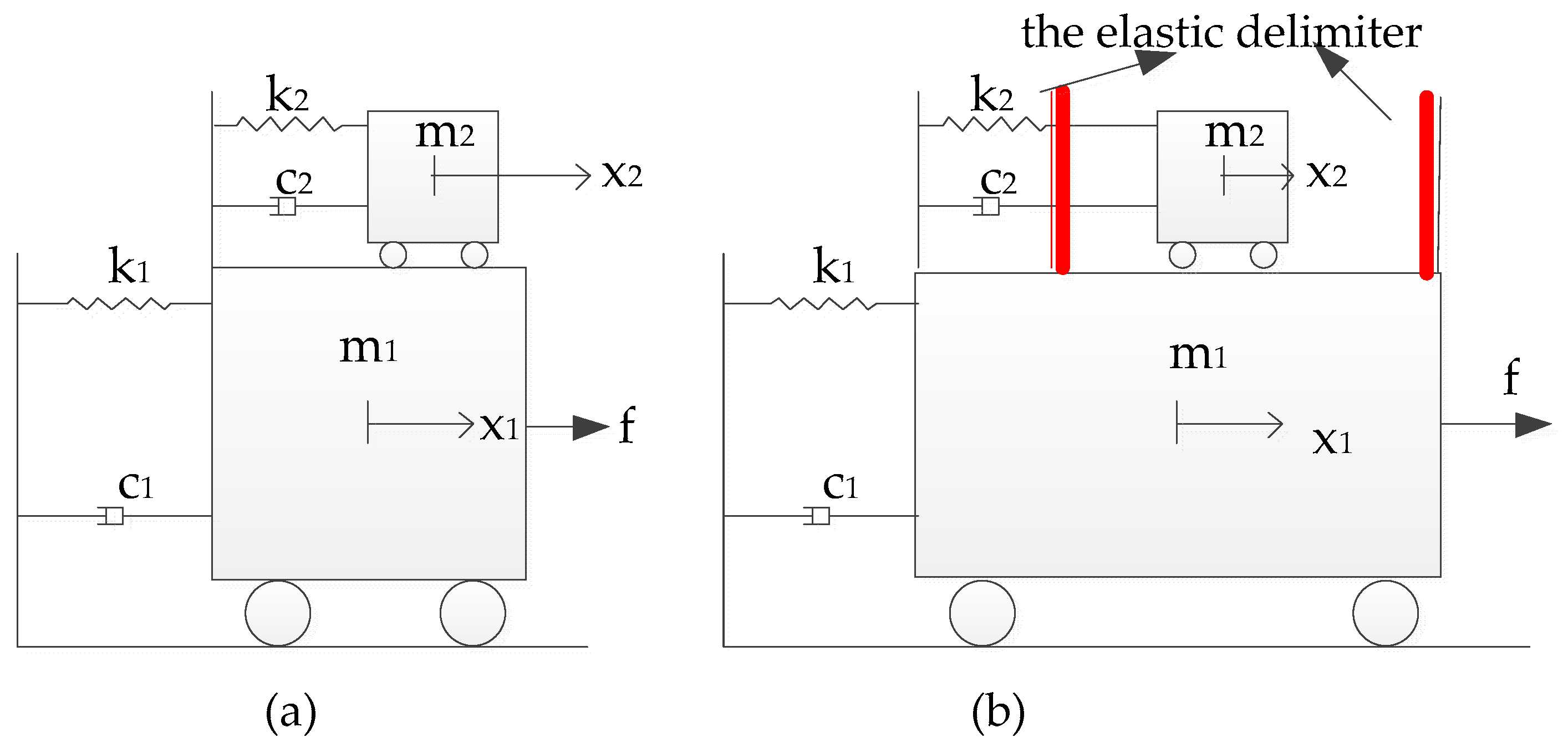


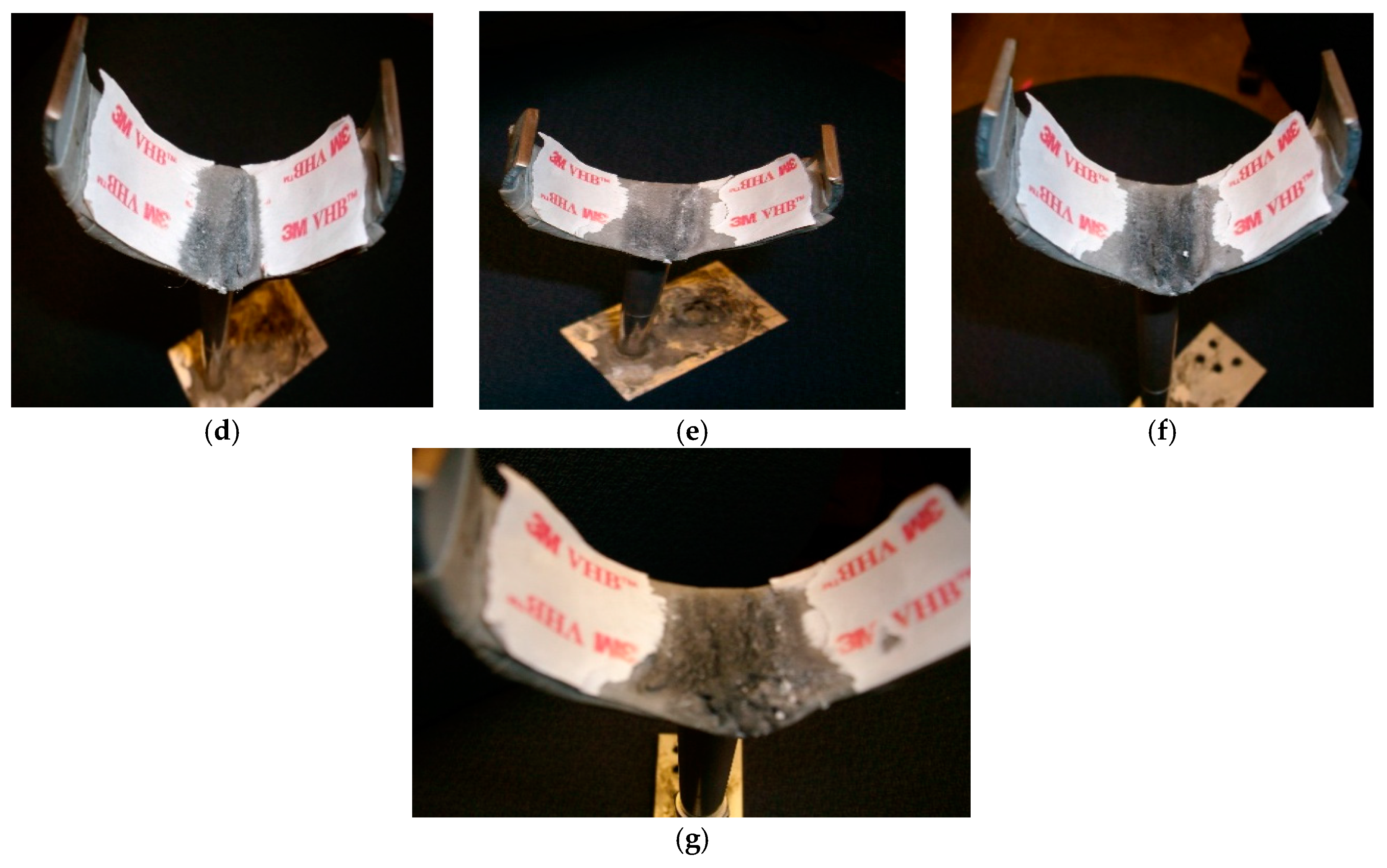
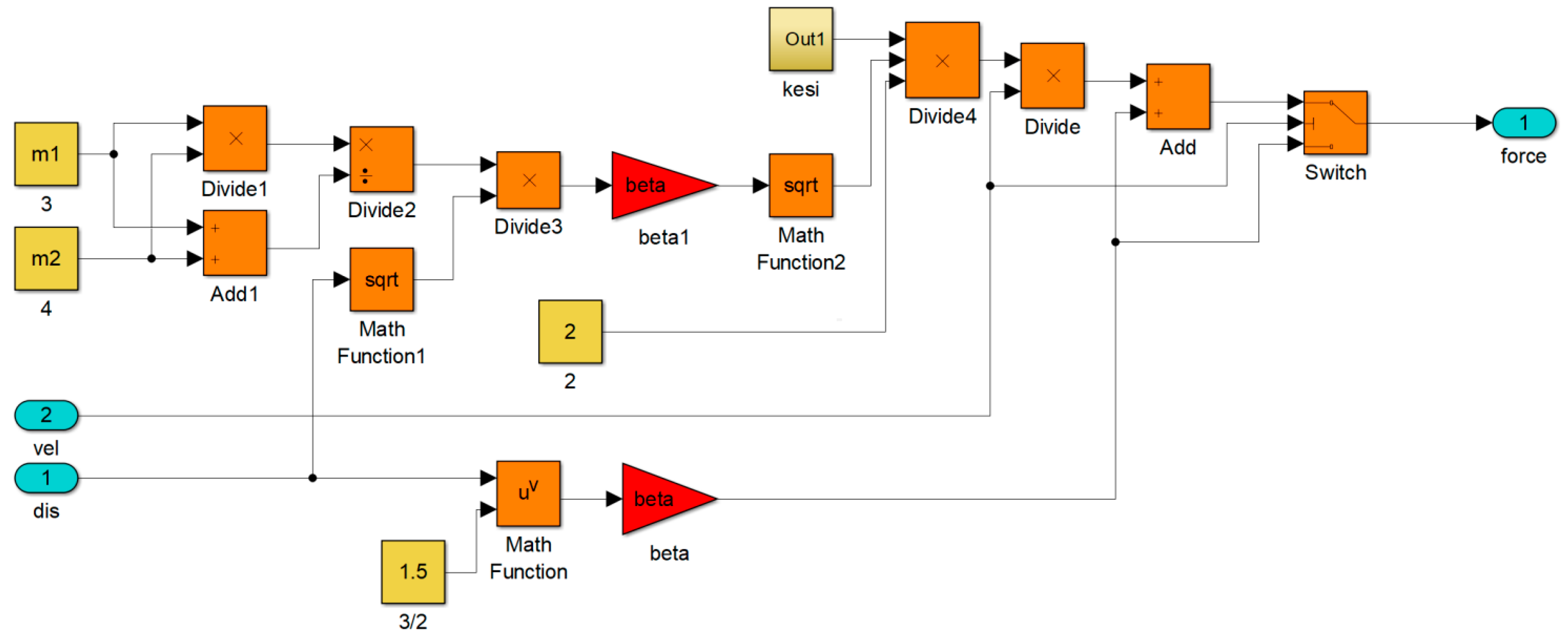
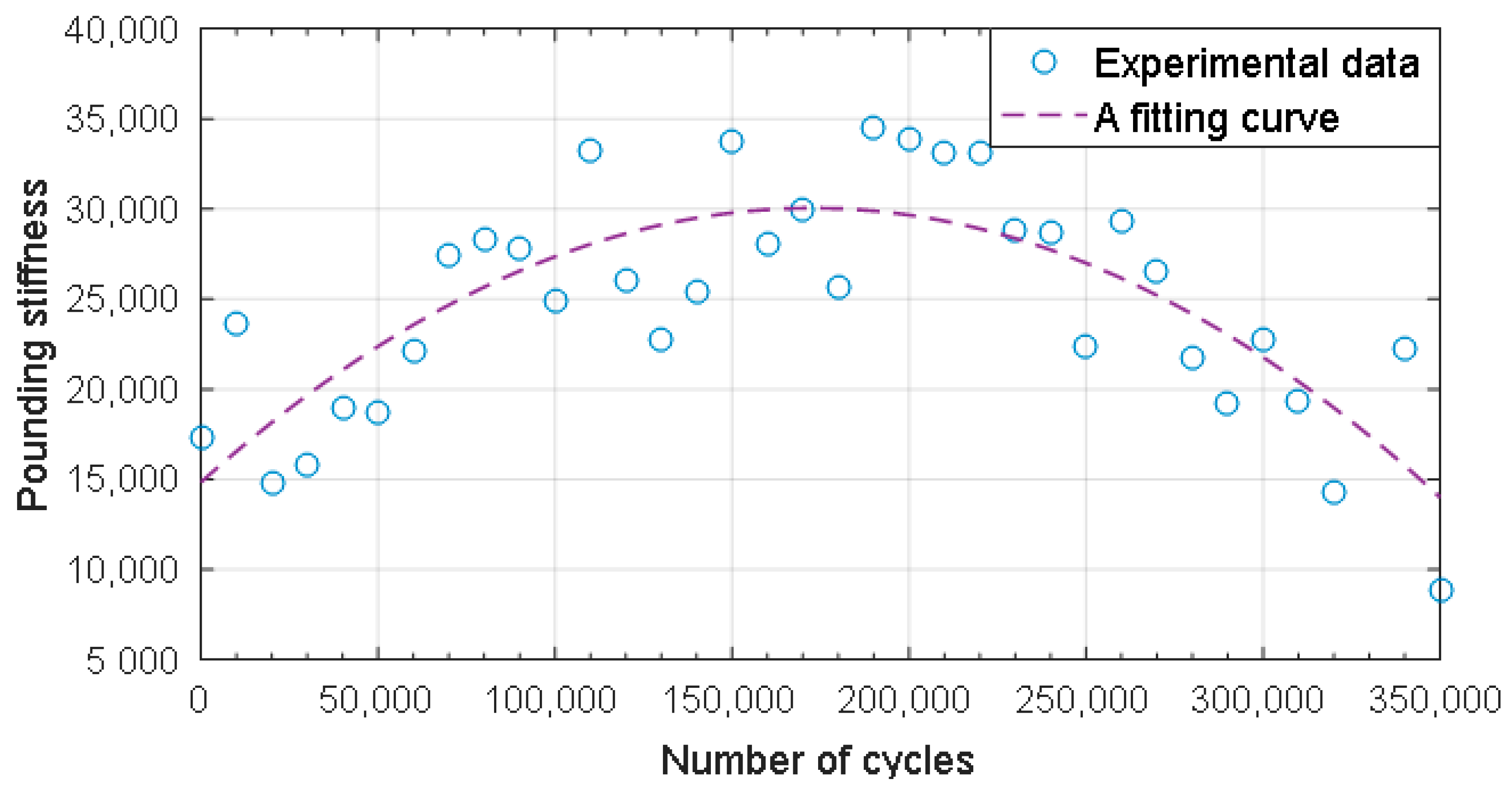
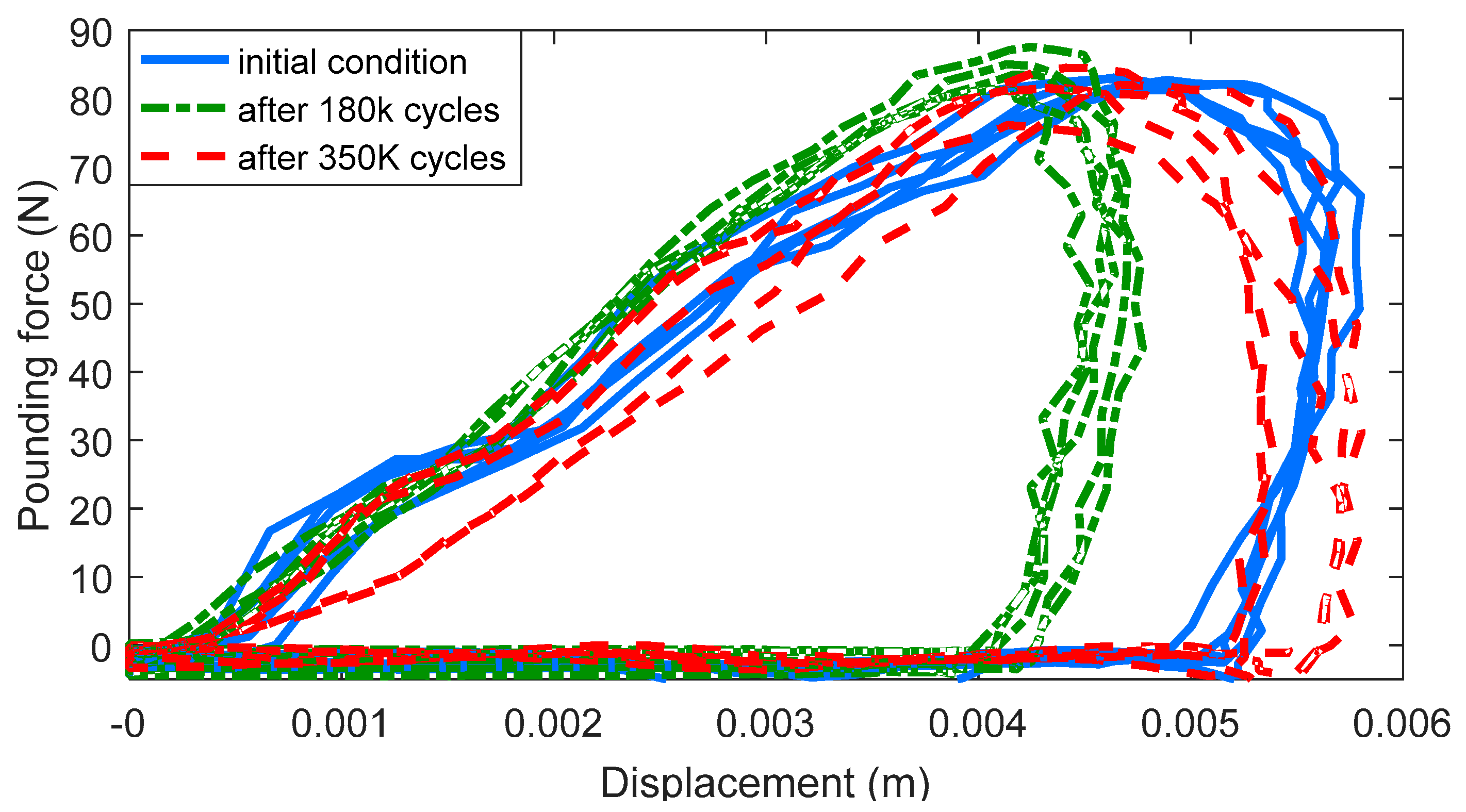
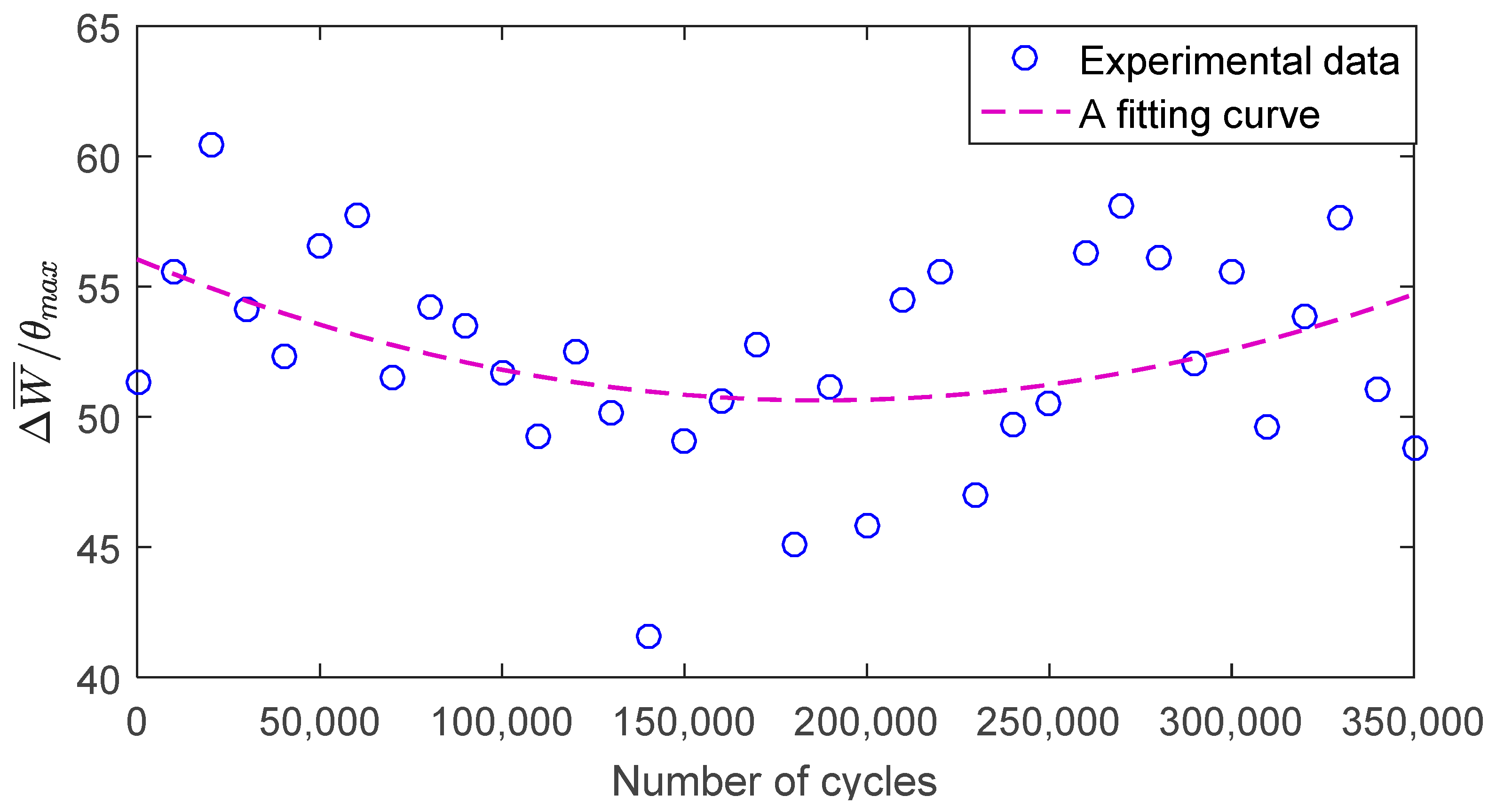
© 2018 by the authors. Licensee MDPI, Basel, Switzerland. This article is an open access article distributed under the terms and conditions of the Creative Commons Attribution (CC BY) license (http://creativecommons.org/licenses/by/4.0/).
Share and Cite
Zhang, P.; Huo, L.; Song, G. Impact Fatigue of Viscoelastic Materials Subjected to Pounding. Appl. Sci. 2018, 8, 117. https://doi.org/10.3390/app8010117
Zhang P, Huo L, Song G. Impact Fatigue of Viscoelastic Materials Subjected to Pounding. Applied Sciences. 2018; 8(1):117. https://doi.org/10.3390/app8010117
Chicago/Turabian StyleZhang, Peng, Linsheng Huo, and Gangbing Song. 2018. "Impact Fatigue of Viscoelastic Materials Subjected to Pounding" Applied Sciences 8, no. 1: 117. https://doi.org/10.3390/app8010117





